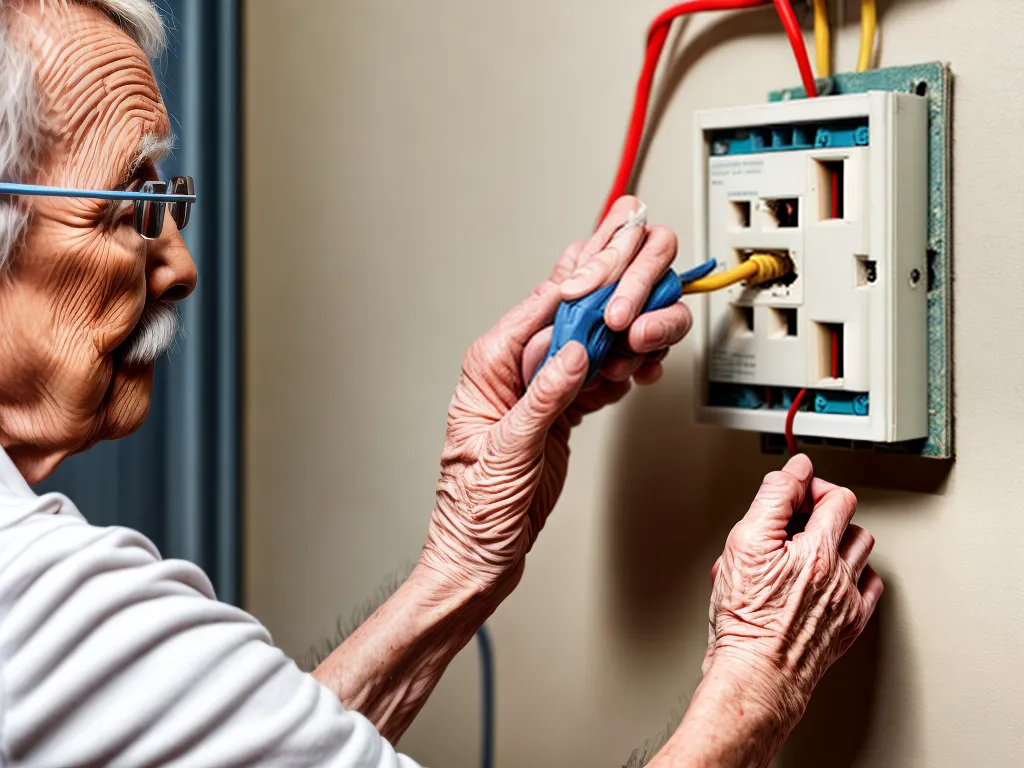
Living in an older home comes with many charms, like beautiful woodwork, higher ceilings, and classic architectural details. However, these older homes often have outdated electrical systems that can present safety issues. As the sole owner of this home, I want to make sure my family stays safe. Here's what I learned about improving electrical safety.
Inspecting the Electrical System
The first step is to inspect the electrical system to identify potential hazards. Here are key things I looked for:
Frayed Wiring
Old, brittle wiring insulation can crack or fray over time, exposing live wires. This creates a serious fire and shock risk. I checked along the lengths of wires for any visible fraying or cracking in the insulation. I also gently jiggled wires to see if the insulation was brittle and broke apart. Any frayed spots need immediate replacement.
Overloaded Circuits
Today's homes use much more electricity than older homes were designed for. If the wiring is undersized, it can overheat from excessive current. Warning signs include:
- Frequent tripped breakers from overloaded circuits
- Flickering lights when large appliances turn on
- Hot outlets or switch plates
- Burning smell from outlets
I hired an electrician to evaluate the home's wiring and upgrade any undersized circuits. This also helped me balance the electrical load better across circuits.
Ground Faults
Older homes often lack ground fault circuit interrupters (GFCIs) for protection against severe shocks. I had GFCIs installed in bathrooms, kitchen, laundry, and other wet areas.
Aluminum Wiring
During the 60s and 70s, some homes used aluminum wiring which is prone to overheating issues. I checked the wire material in the electrical panel and outlets. If aluminum is present, it needs evaluation by an electrician to prevent connections from loosening over time.
Upgrading the Electrical Panel
The main electrical panel is the central hub connecting all the home's electrical circuits. Old panels need upgrades for safety:
-
Insufficient Capacity - Outdated 60 or 100 amp panels may lack enough power for today's needs. I upgraded to a 200 amp panel.
-
Overheating - Hot spots around the panel may indicate overloaded circuits, corrosion, or loose connections. The panel may need replacement.
-
No Cover - Exposed electrical terminals pose a serious risk of shocks and burns. I replaced missing covers.
-
Double Tapping - This refers to two wires shared on a single circuit breaker connection. It can cause overheating and is prohibited by code. The electrician rewired the panel properly.
-
No Grounding - Ungrounded panels don't provide shock protection. I retrofitted grounding for safety.
Replacing Outlets and Switches
Old outlets and switches also degrade over time:
-
No Ground - Three-prong outlets need grounded to prevent shocks if an appliance develops a short. I replaced ungrounded outlets with GFCIs.
-
Loose Connections - This can increase resistance and overheat the outlet. I tightened all outlet connections.
-
Brittle Plastic - Outlets can eventually crack and expose live terminals. Switches with degraded plastic housings were replaced.
-
Cloth-Covered Wiring - This old type of wiring is too brittle and dangerous for continued use. I replaced it.
-
Backstab Connections - These quick-connect wires on the back of outlets are prone to loosening over time. I converted to screw-terminal connections.
Lighting Fixtures
Many older lighting fixtures are inefficient and risky:
-
Knob-and-Tube Wiring - This outdated wiring lacks grounding and insulation between wires. I removed all knob-and-tube and upgraded to modern wiring.
-
Insulation Contact - Old wiring run directly through insulation can overheat. I checked for any live wiring touching insulation and repaired it.
-
Exposed Bulbs - Fixtures without glass covers expose hot bulbs, which is a fire hazard and burn risk. I replaced them with covered fixtures.
-
High-Wattage Bulbs - Older fixtures often had 100W+ incandescent bulbs, which produce a lot of heat. I replaced bulbs with cooler, lower wattage LEDs.
Whole-Home Surge Protection
Older homes lack modern surge protectors to defend against voltage spikes. Surges can damage electronics and even create an electrical fire hazard. I installed heavy-duty surge protectors at my main electrical panel to safeguard all the wiring and equipment in my home.
Upgrading my older home's electrical system for safety took significant effort and expense. However, protecting my family from shocks, fires, and electrocution is well worth the peace of mind. While newer homes have modern wiring, even younger systems eventually need upgrading and maintenance to stay safe. Home electrical safety should be a priority for all homeowners.